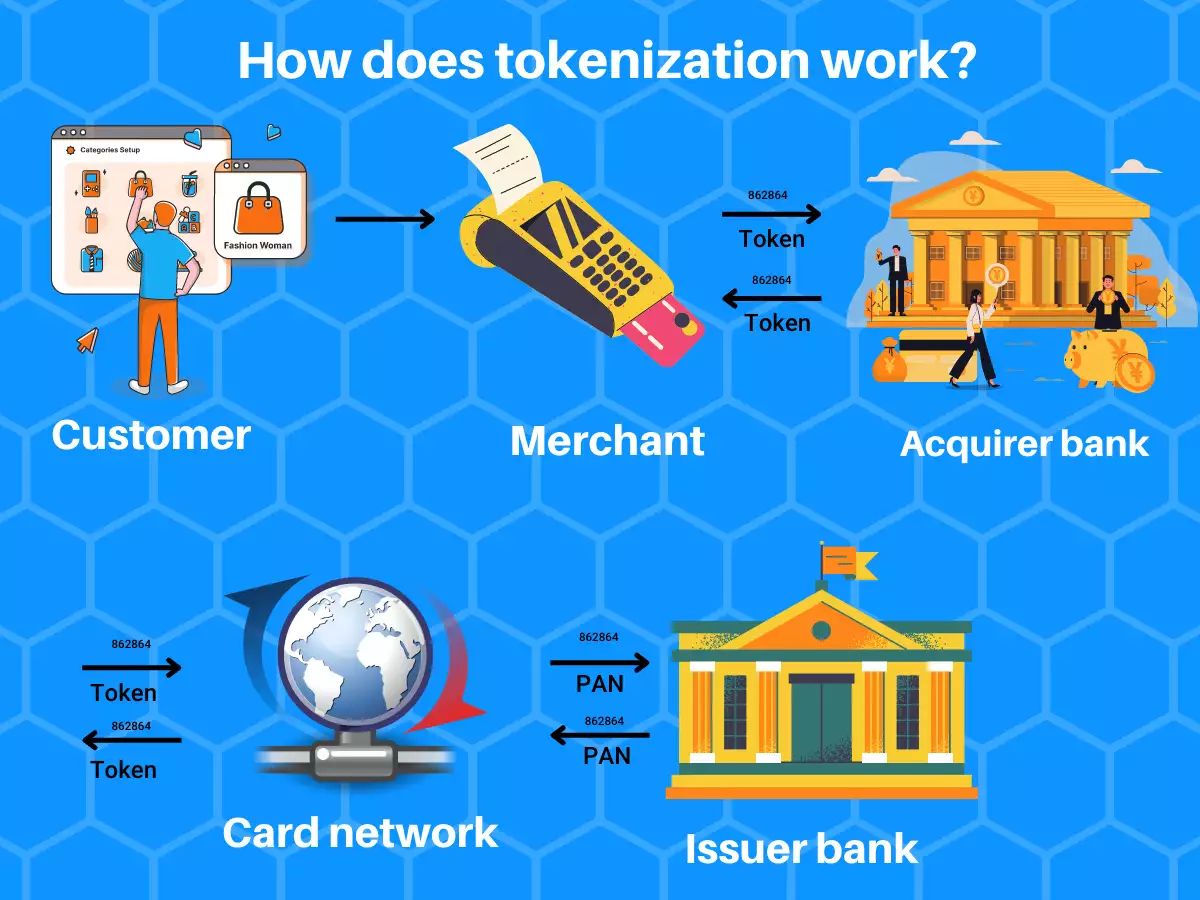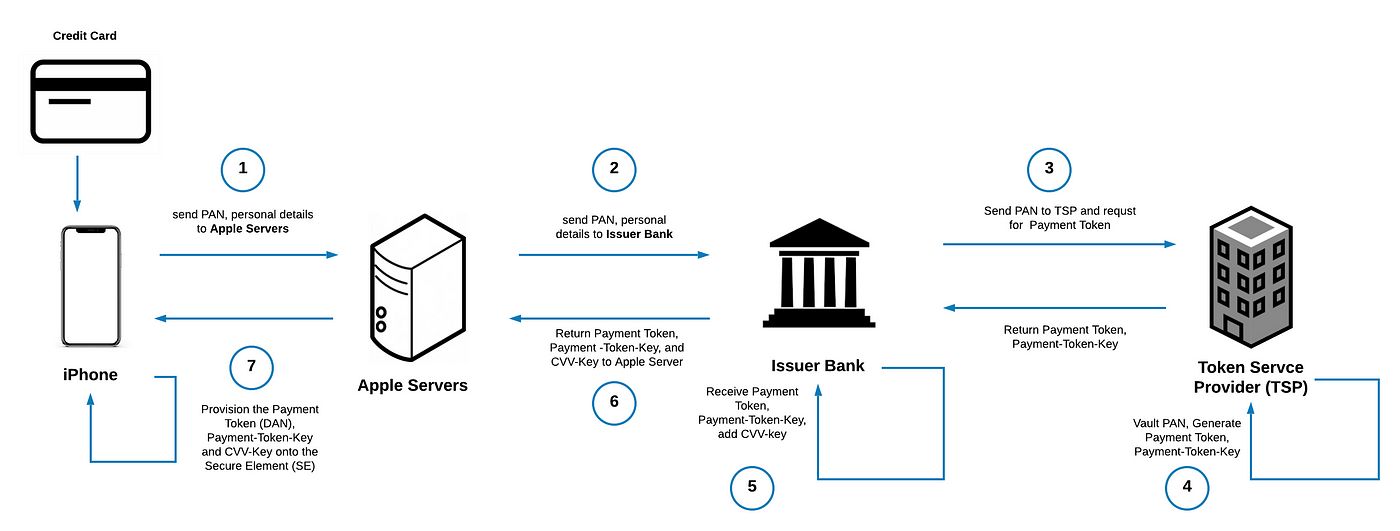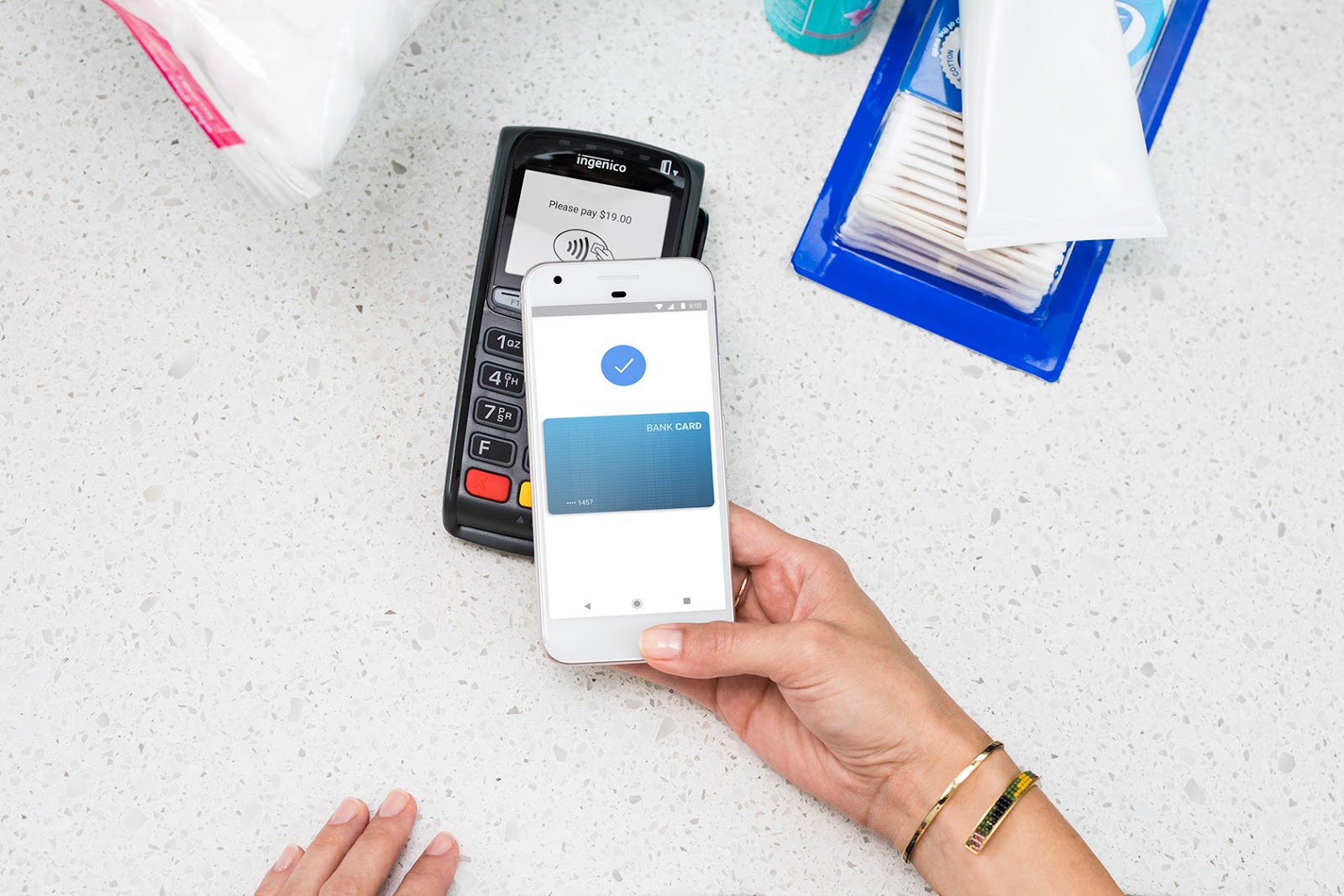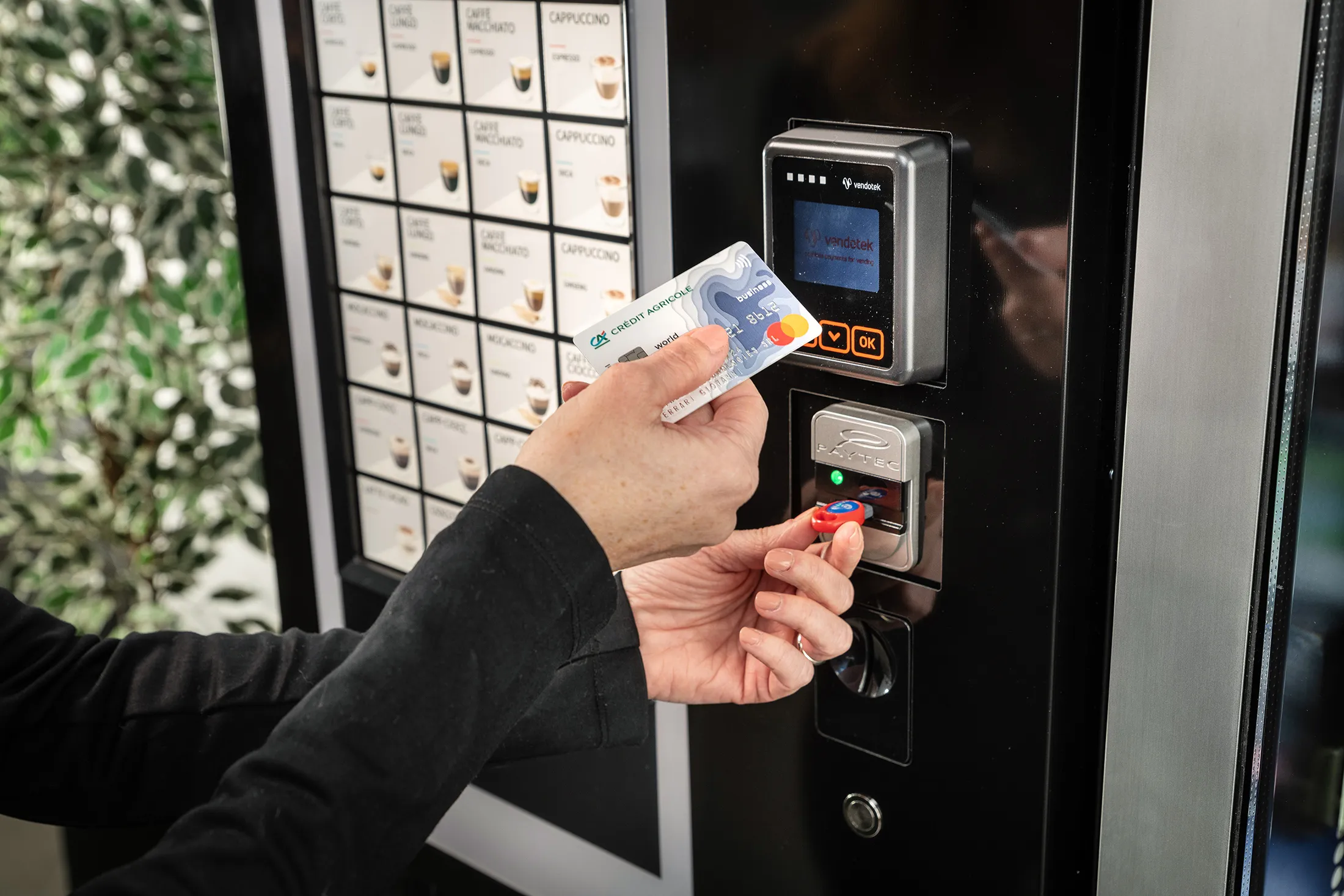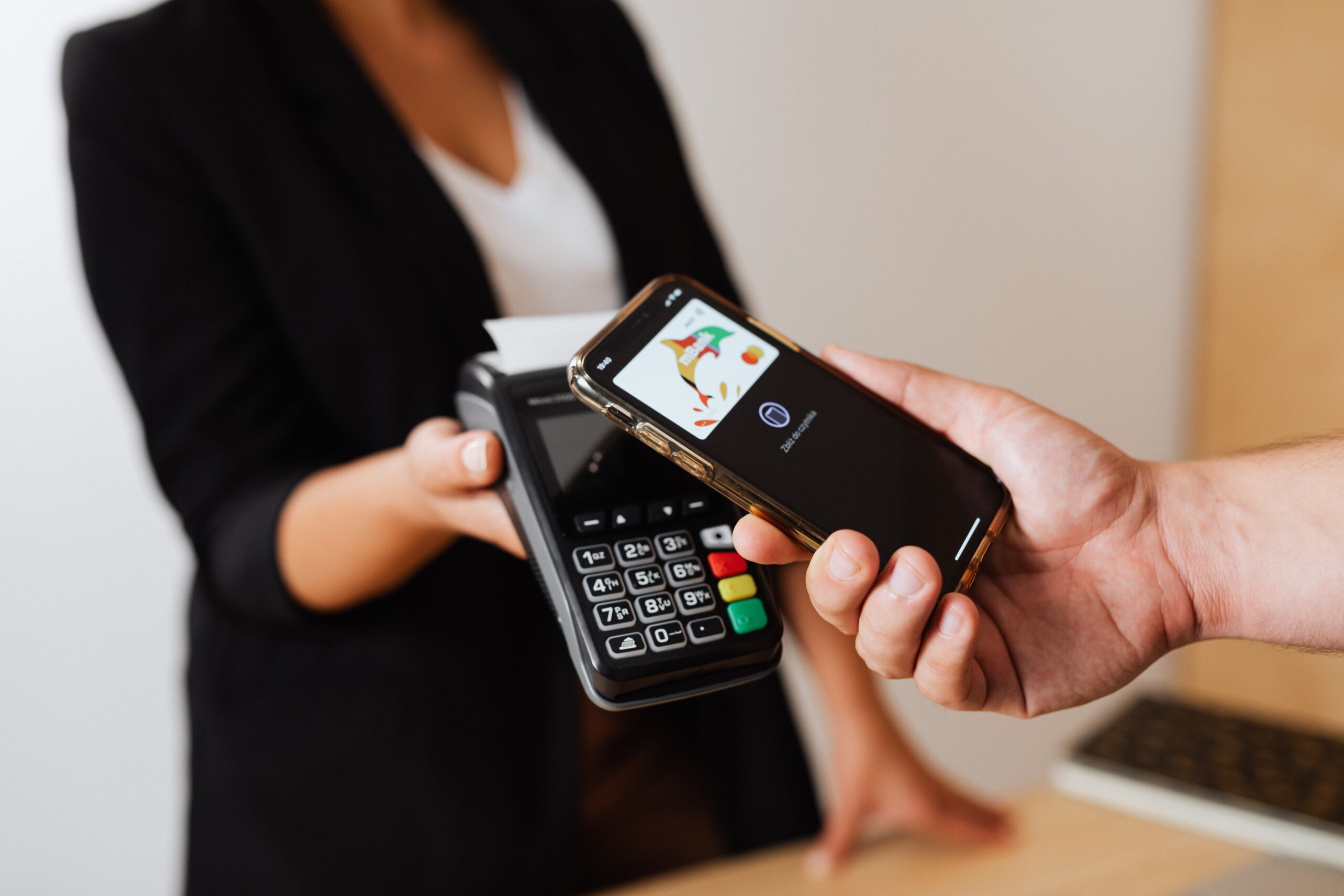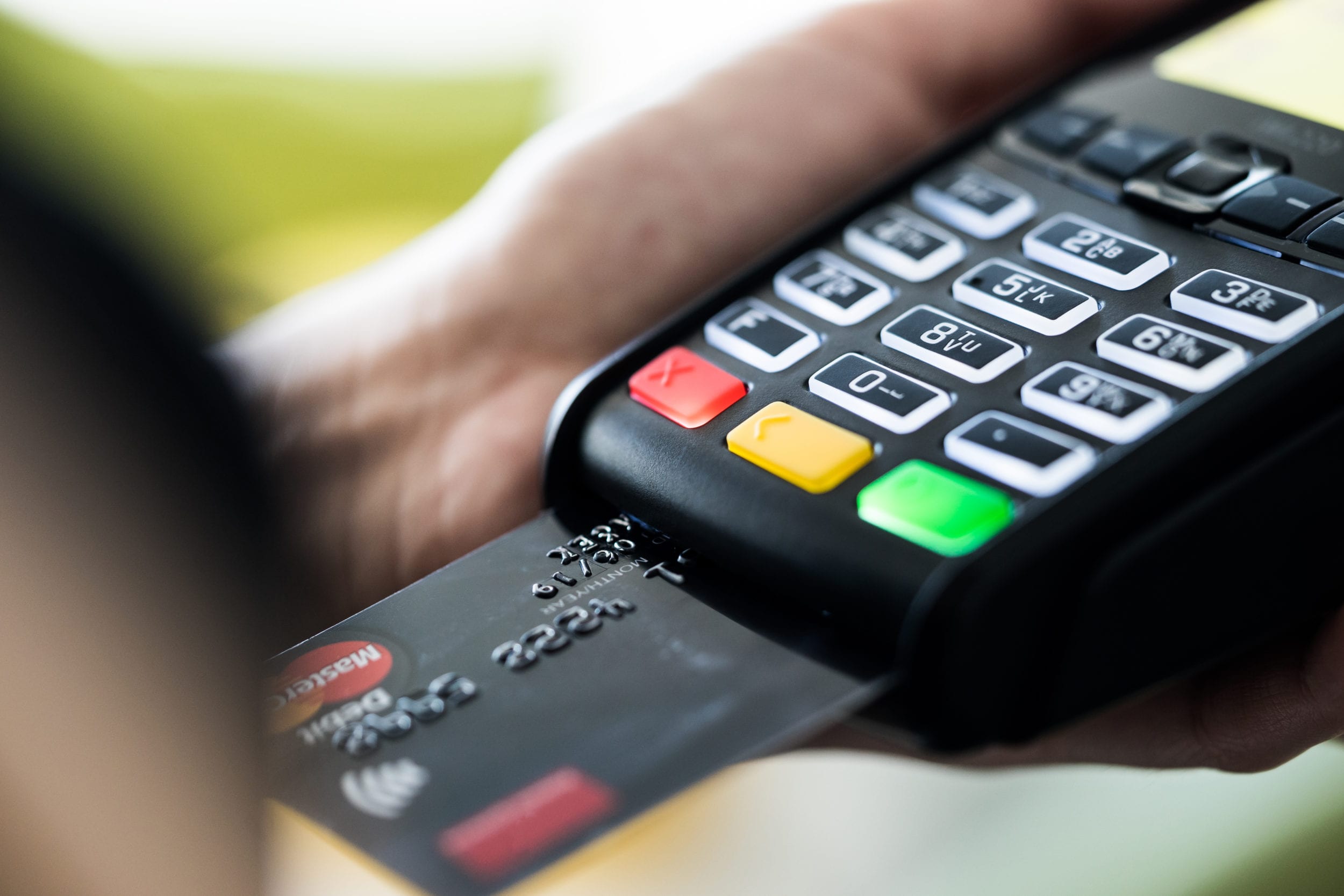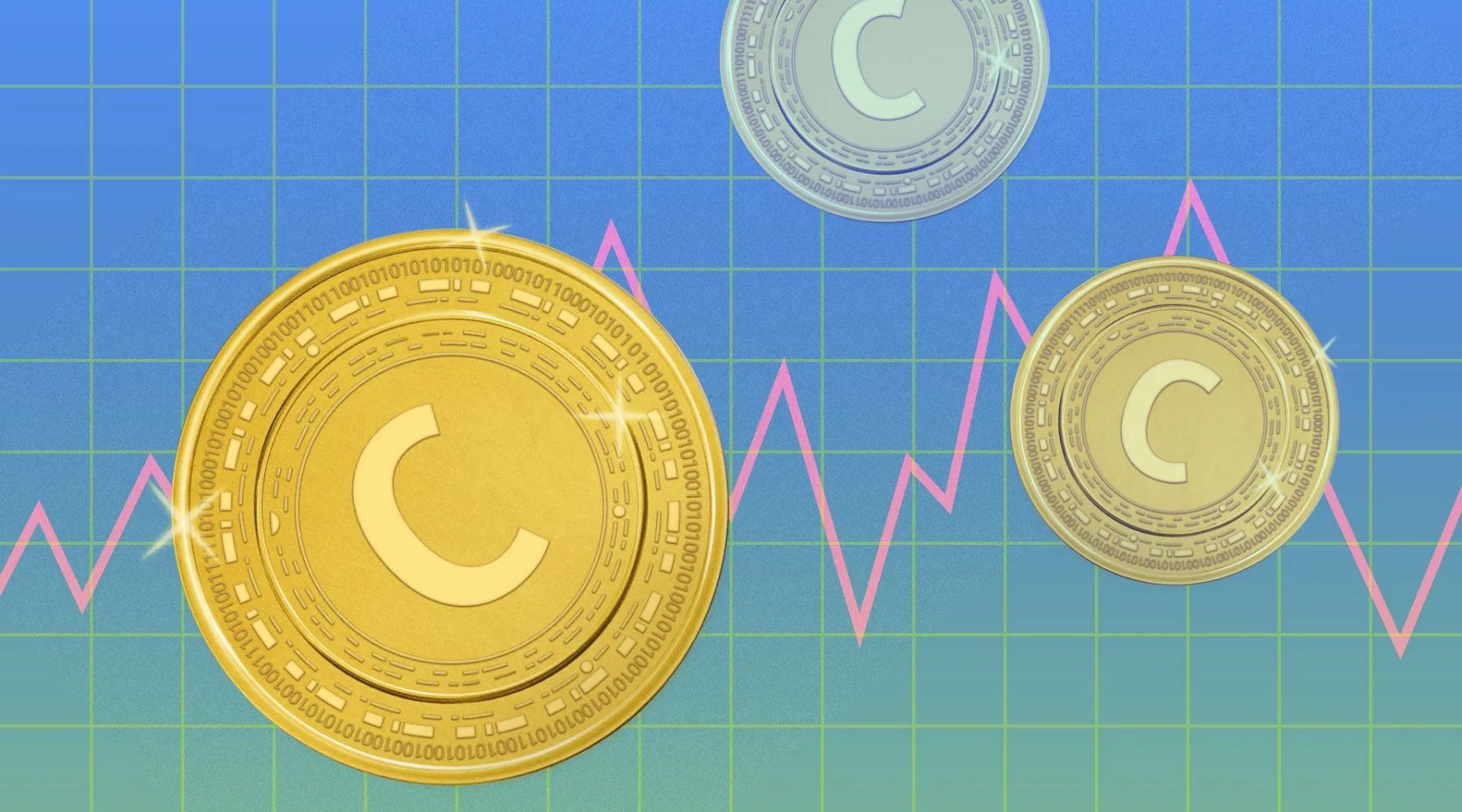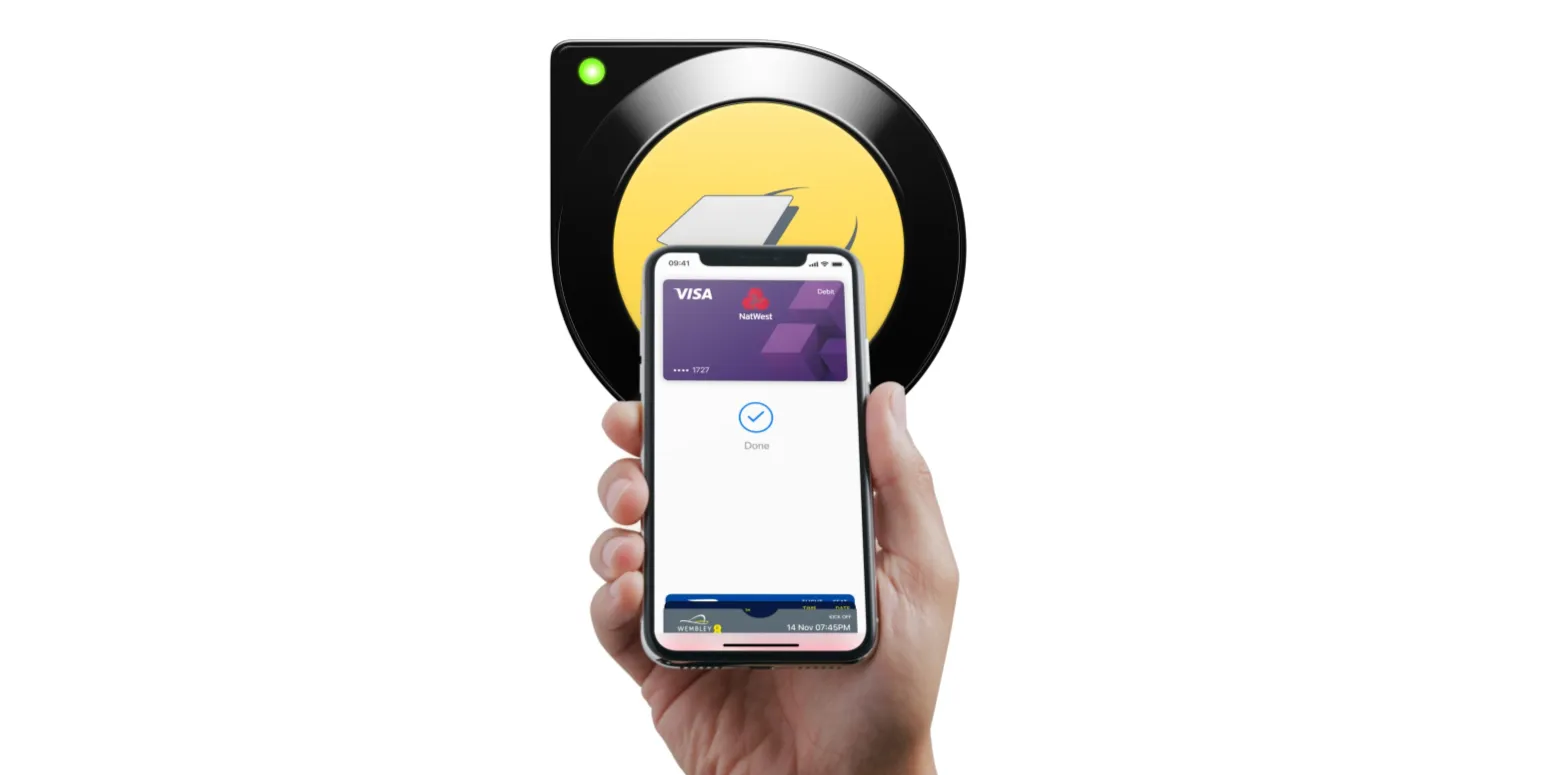Introduction
Tokenization is a revolutionary process that has transformed debit card transactions by enhancing security and protecting sensitive financial information. As technology continues to advance, and online transactions become more prevalent, the importance of safeguarding sensitive data has become paramount. Simply put, tokenization replaces sensitive debit card data, such as the card number and CVV code, with a unique token that is meaningless to hackers or unauthorized users.
Traditionally, when making a debit card transaction, the cardholder’s sensitive information is transmitted and stored by various intermediaries, increasing the risk of data breaches and fraud. However, with tokenization, this process is significantly altered. Instead of transmitting actual card details, the system generates a unique token that acts as a substitute for the original data. This token is then used to complete the transaction, providing a layer of security.
Tokenization works by utilizing a complex algorithm to convert the debit card information into a unique token. This token is not reversible, meaning it cannot be decrypted to obtain the original card details. The algorithm ensures that each token is different for every transaction, making it nearly impossible for hackers to decipher the sensitive information even if they manage to gain access to the tokenized data.
The primary objective of tokenization is to prevent sensitive debit card information from being compromised in the event of a data breach or unauthorized access. By replacing the card details with useless tokens, the risk of theft and fraud is significantly reduced. Additionally, tokenization streamlines the process of conducting secure transactions, providing peace of mind to both merchants and consumers.
Unlike other data protection methods, such as encryption, tokenization removes the need for decryption. This means that even if a hacker obtains the tokenized data, they will not have the means to reverse-engineer it and access the original card information. This added layer of security makes tokenization a highly effective method of safeguarding debit card transactions.
In the following sections, we will delve deeper into how tokenization works, explore the benefits it offers, compare it to encryption, and discuss its implications for debit card users. Understanding how tokenization protects sensitive financial information is crucial in today’s digital world. Let’s explore this fascinating technology further.
Definition of Tokenization
Tokenization is a data security measure used to protect sensitive information, such as debit card details, by substituting it with a unique token. In the context of debit card transactions, tokenization involves replacing the actual card number, CVV code, and other pertinent details with a randomly generated token that holds no intrinsic value.
The token is a string of characters that serves as a reference or identifier for the original card data. It acts as a surrogate, allowing merchants, payment processors, and other intermediaries to complete transactions without exposing the actual card information. This method ensures that even if the tokenized data is intercepted or accessed by unauthorized parties, it holds no usable value or possibility of decryption.
Tokenization is different from encryption, which is another widely used method of securing data. While encryption converts data into an unreadable format that can be reversed using a decryption key, tokenization does not require decryption. The token is generated using a one-way algorithm that cannot be reversed to retrieve the original card information. This key distinction makes tokenization a highly secure and efficient method of protecting sensitive data in debit card transactions.
It is important to note that tokenization is not limited to debit card transactions. It is a versatile technique used in various industries to protect sensitive data, including credit card information, personal identification numbers (PINs), and medical records. In each use case, the objective remains the same: to prevent unauthorized access to sensitive information and minimize the risk of data breaches and identity theft.
In the next section, we will explore how tokenization works and the underlying mechanisms that make it an effective defense against data breaches and fraud.
How Tokenization Works
Tokenization is a complex process that involves several steps to ensure the secure substitution of sensitive debit card information with a unique token. Here’s a simplified overview of how tokenization works:
- Data Collection: When a debit card is used for a transaction, the relevant card details, such as the card number, CVV code, and expiration date, are collected.
- Data Transmission: The collected data is then securely transmitted from the point of sale (POS) terminal or online platform to the tokenization system.
- Token Generation: In the tokenization system, a token is generated using a one-way algorithm. This algorithm ensures that the token is unique and irreversible, making it impossible to derive the original card details from the token itself.
- Token Assignment: The generated token is then assigned to the specific card information for that transaction. This mapping allows the token to act as a reference for the original data while protecting its confidentiality.
- Token Storage: The tokenized data, including the assigned token, is securely stored in a database or token vault. This storage ensures that the original card information remains protected and inaccessible to unauthorized parties.
- Token Usage: When a transaction needs to be processed or authorized, the token, rather than the original card details, is used. The token is transmitted and processed securely, eliminating the risk associated with transmitting sensitive financial information.
- Data Retrieval: Upon authorization of the transaction, the token is used to retrieve the appropriate card information from the token vault. This retrieval allows the completion of the transaction while keeping the card information secure.
It is worth noting that the tokenization process is swift and seamless. From the perspective of the cardholder and merchant, the transaction flow remains unchanged, providing a convenient and secure payment experience.
Tokenization systems employ rigorous security measures to protect the tokenized data from unauthorized access or manipulation. These measures include encryption, access controls, and regular monitoring to detect any potential breaches. By safeguarding the tokenized data, tokenization ensures that sensitive debit card information remains confidential and protected throughout the transaction lifecycle.
Next, we will explore the benefits that tokenization offers and why it has become an essential security measure for debit card transactions.
Benefits of Tokenization
Tokenization brings numerous benefits to debit card transactions, offering enhanced security and peace of mind to both merchants and cardholders. The key advantages of tokenization include:
- Enhanced Security: Tokenization significantly reduces the risk of data breaches and fraud. By replacing sensitive card information with meaningless tokens, the likelihood of unauthorized access or exploitation of card data is greatly diminished. Even if hackers manage to intercept the tokenized data, the tokens hold no value or decryption possibility.
- Data Confidentiality: Tokenization ensures utmost confidentiality of sensitive debit card information. The original card details are securely stored in a token vault, while tokens are used for transaction processing. This separation of sensitive data adds an extra layer of protection against potential security breaches.
- Streamlined Compliance: Tokenization helps businesses comply with relevant security standards, such as the Payment Card Industry Data Security Standard (PCI DSS). By implementing tokenization, merchants can mitigate the complexity and cost associated with meeting PCI DSS requirements, as the sensitive cardholder data is no longer stored within their systems.
- Seamless User Experience: Tokenization does not disrupt the payment process for cardholders. The tokenized transactions are carried out in the same manner as traditional card transactions, providing a familiar and convenient payment experience. This enables users to make secure payments without requiring any additional steps or inconveniences.
- Reduced Liability: Tokenization reduces the liability of both merchants and cardholders in the event of a data breach. Since actual card information is not stored or transmitted during transactions, the risk of financial losses and reputational damage due to compromised card data is significantly minimized.
- Efficient Data Handling: Tokenization alleviates the burden of handling and securing sensitive cardholder information. Merchants no longer need to adhere to stringent data protection protocols for storing and transmitting card data, as tokens are used instead. This allows businesses to reallocate resources and focus on core operations.
These benefits make tokenization an invaluable tool in the ongoing fight against data breaches and identity theft. By reducing the risks associated with handling sensitive debit card information, tokenization provides a secure and efficient solution for modern payment transactions.
In the next section, we will compare tokenization with encryption, another popular method of data security, to better understand their similarities and differences.
Security of Tokenization
Tokenization serves as a formidable defense against data breaches and unauthorized access to sensitive debit card information. By utilizing unique tokens in place of actual card details, tokenization offers several layers of security to safeguard transactions. Here’s a closer look at the security features of tokenization:
- Irreversibility: Tokens generated through tokenization are irreversible, meaning they cannot be decrypted to reveal the original card information. Since the tokenization system uses a one-way algorithm to generate tokens, it is highly unlikely that anyone can reverse-engineer the tokens to obtain the sensitive card data.
- Data Isolation: Tokenization ensures that debit card information is isolated and stored separately from the tokenized data. The actual card details are securely stored in a token vault, which is inaccessible to external threats. This separation of sensitive data adds an additional layer of security and protects against potential breaches.
- Unique Tokens: Each token generated through tokenization is unique to a specific transaction, merchant, or cardholder. This uniqueness makes it extremely difficult for malicious actors to exploit a token to gain access to multiple transactions or cardholder information. Even if one token is compromised, it has no value for any other transaction.
- Different Tokenization Systems: Tokenization systems are designed to be highly secure, employing robust encryption and access control mechanisms. Organizations can choose from various tokenization providers, each offering their own set of security features and compliance measures. This allows businesses to select a system that aligns with their security requirements and ensures the utmost protection for cardholder data.
- Secure Data Transmission: During transactions, tokenized data is securely transmitted through encryption mechanisms. This prevents unauthorized interception and ensures that data remains protected throughout the entire transmission process. The encryption adds an extra layer of security, making it difficult for eavesdroppers to decipher any sensitive information.
- Token Expiration: Some tokenization systems implement token expiration periods to further enhance security. Tokens may have a limited lifespan, rendering them useless once they expire. This reduces the risk of long-term compromise and adds an additional safeguard to protect against unauthorized use of tokens.
It’s important to note that while tokenization provides robust security measures, it should be implemented alongside other security practices and measures to create a comprehensive defense strategy. This may include network security, regular vulnerability assessments, and employee training on data security best practices.
Next, we will examine the differences between tokenization and encryption to understand how each method contributes to secure debit card transactions.
Tokenization vs. Encryption
Tokenization and encryption are two commonly utilized methods of securing sensitive data, but they differ in their approach and functionality. Let’s compare tokenization and encryption to understand how each method contributes to secure debit card transactions:
Methodology:
Encryption involves using algorithms to convert data into an unreadable format, known as ciphertext. The encrypted data can only be deciphered with a specific decryption key. Encryption transforms the original data into a format that is reversible, allowing the encrypted data to be decrypted and restored to its original form when needed.
Tokenization, on the other hand, focuses on substituting sensitive data with unique tokens. Tokens are random, irreversible, and independent of the original data. Tokenization doesn’t require decryption since the tokens themselves hold no intrinsic value and cannot be reversed to reveal the original data.
Reversibility:
Encryption is a reversible process, meaning the encrypted data can be decrypted using the appropriate key to obtain the original information. This characteristic allows encrypted data to be utilized for various purposes when the decryption key is available.
Tokenization, on the other hand, is irreversible. The tokens generated through tokenization cannot be decrypted to derive the original data. The tokens act as references or placeholders for the actual data while keeping it securely hidden. Even if the tokenized data is compromised or intercepted, it provides no advantage without access to the token vault and the original data.
Data Storage:
Encryption typically requires the storage of both the encrypted data and the encryption key. This means that if a data breach occurs and the encryption key is compromised, the encrypted data may be vulnerable to decryption and unauthorized access.
Tokenization, on the other hand, involves storing the sensitive data securely in a separate token vault, while tokens are used for day-to-day transaction processing. The tokenized data holds no value without access to the token vault, making it more secure against unauthorized access.
Performance and Convenience:
Encryption and decryption processes can introduce some performance overhead, particularly when dealing with large volumes of data. Decrypting encrypted data takes time and computational resources, which can impact transaction processing speeds.
Tokenization is generally faster because there is no need for decryption. The token substitution process is quick and efficient, providing seamless transaction processing for both merchants and cardholders. This ensures a smooth user experience without sacrificing security.
Use Cases:
Encryption is widely used to protect sensitive data at rest, such as stored information in databases or on devices. It provides a high level of security against unauthorized access to data, particularly in scenarios where data needs to be securely stored and accessed.
Tokenization, on the other hand, is best suited for environments where sensitive data needs to be transmitted or processed. With tokenization, the original data is replaced with tokens, minimizing the risk of data exposure during transactional processes.
While both encryption and tokenization are effective methods of data security, tokenization offers unique advantages in protecting debit card transactions, providing enhanced security, and streamlining the payment process.
In the next section, we will explore how tokenization is specifically implemented in debit card transactions and its implications for cardholders.
Tokenization and Debit Cards
Tokenization plays a crucial role in enhancing the security of debit card transactions. By replacing sensitive card details with unique tokens, tokenization offers a highly secure method of conducting payments. Let’s explore how tokenization is specifically implemented in debit card transactions and its implications for cardholders:
When a debit card is used for a transaction, the cardholder’s sensitive information, including the card number, CVV code, and expiration date, is collected. Instead of transmitting this information directly, it is sent to a tokenization system where a unique token is generated. This token serves as a substitute for the original card data throughout the transaction process.
For the cardholder, the payment experience remains unchanged. They still provide their card details as usual, but behind the scenes, the tokenization system replaces the sensitive information with tokens. These tokens are meaningless and hold no value to potential attackers or unauthorized individuals.
Tokenization offers several implications for debit card users:
- Enhanced Security: Debit card tokenization significantly reduces the risk of data breaches and fraud. As the actual card details are not transmitted or stored during a transaction, the tokens cannot be reverse-engineered to obtain the original card information.
- Protection Against Data Breaches: In the unfortunate event of a data breach, tokenization ensures that sensitive card data remains secure. The tokens lack the necessary information to conduct fraudulent transactions, minimizing potential financial losses and identity theft.
- Convenient and Seamless Experience: Cardholders can enjoy the convenience of making secure debit card transactions without any additional steps or complexities. The tokenization process occurs quickly and seamlessly, ensuring a smooth payment experience without compromising security.
- Reduced Liability: By utilizing tokenization, both merchants and cardholders benefit from reduced liability in the event of a data breach or fraudulent activity. Since the tokenized data holds no intrinsic value and cannot be used to conduct unauthorized transactions, the risk of financial losses and reputation damage is significantly diminished.
- Compliance with Security Standards: Tokenization assists businesses in complying with industry security standards, such as the Payment Card Industry Data Security Standard (PCI DSS). By implementing tokenization, merchants can effectively protect cardholder data and reduce the complexity and cost associated with maintaining stringent security protocols.
Overall, tokenization empowers debit card users with heightened security and peace of mind when making transactions. By integrating this advanced security measure, the risk associated with debit card usage is greatly minimized, enabling users to enjoy the convenience of debit card payments without compromising their financial safety.
In the next section, we will explore the tokenization process in debit card transactions and how it ensures secure payment processing.
Tokenization Process in Debit Card Transactions
The tokenization process in debit card transactions involves several steps to ensure the secure replacement of sensitive card data with unique tokens. Let’s explore how tokenization is implemented in the context of debit card transactions:
- Data Collection: When a debit card is used for a transaction, the necessary card details, such as the card number, CVV code, and expiration date, are collected.
- Data Transmission: The collected card information is securely transmitted from the point of sale (POS) terminal or online platform to the tokenization system.
- Token Generation: In the tokenization system, a unique token is generated using a sophisticated algorithm. This algorithm transforms the original card data into an irreversible token that serves as a substitute for the sensitive information.
- Token Assignment: The generated token is assigned to the corresponding card details for that specific transaction. This mapping allows the token to serve as a reference while protecting the confidentiality of the underlying card data.
- Token Storage: The tokenized data, including the assigned token, is securely stored in a database or token vault. The token vault ensures the protection of the original card information, making it inaccessible to unauthorized parties.
- Token Usage: When a debit card transaction needs to be processed or authorized, the token associated with the original card data is used instead of transmitting the actual card details. This token is sent securely, eliminating the risk associated with transmitting sensitive financial information.
- Data Retrieval: Upon authorization of the transaction, the token is used to retrieve the corresponding card information from the token vault. This retrieval allows for the completion of the transaction while ensuring the security of the cardholder’s sensitive data.
Throughout this process, tokenization eliminates the need to transmit and store actual card details, significantly reducing the risk of data breaches and fraud. The tokenized data remains protected, as tokens hold no intrinsic value and cannot be reversed to derive the original card information.
It’s important to note that tokenization can be implemented at various points in the debit card transaction process, depending on the specific system and integration. Some tokenization processes occur at the point of sale, while others may take place in the online payment gateway or within the payment processor’s infrastructure.
By applying tokenization to debit card transactions, robust security measures are in place to safeguard sensitive cardholder data throughout the entire transaction lifecycle, from data collection to final authorization.
Next, we will explore the implications of tokenization for debit card users and how it enhances the security of their financial transactions.
Implications of Tokenization for Debit Card Users
Tokenization has significant implications for debit card users, offering enhanced security and peace of mind when making transactions. Let’s explore the implications of tokenization for debit card users:
- Enhanced Security: Debit card users can enjoy enhanced security through tokenization. By replacing sensitive card details with tokens, the risk of unauthorized access to their financial information is significantly reduced. Even if tokens are intercepted, they hold no value or decryption possibility, ensuring the privacy and confidentiality of cardholder data.
- Protection Against Data Breaches: Tokenization protects debit card users from the ramifications of data breaches. As tokens replace the actual card information during transactions, the risk of stolen data being used for fraudulent purposes is minimized. The tokenized data is useless without access to the token vault and the corresponding card information.
- Convenient and Seamless Transactions: Tokenization does not disrupt the payment process for debit card users. They can continue to make transactions in the same manner as before, providing their card details without the need to remember additional information or take extra steps. This convenience allows for a seamless and efficient payment experience.
- Reduced Liability: Debit card users benefit from reduced liability when utilizing tokenization. In the event of a data breach, the tokenized data holds no value for fraudsters, minimizing the financial losses and potential liability for unauthorized transactions. The responsibility for securing the actual card information lies with the tokenization service providers and merchants.
- Confidence in Payment Security: Tokenization instills confidence in debit card users regarding the security of their financial transactions. Knowing that their sensitive card details are replaced with meaningless tokens during the payment process provides reassurance and trust in the system. Users can feel confident that their financial information is being handled with the highest level of security.
- Compliance with Security Standards: Debit card users benefit indirectly from tokenization as it helps businesses comply with critical security standards, such as the Payment Card Industry Data Security Standard (PCI DSS). Tokenization assists in reducing the scope of cardholder data storage, minimizing the risks for both merchants and users.
These implications highlight how tokenization empowers debit card users with a secure and convenient payment experience. By protecting sensitive cardholder data, tokenization ensures that users can conduct transactions with confidence, knowing that their financial information is well-guarded.
In the next section, we will explore prominent tokenization providers that offer secure debit card transactions.
Tokenization Providers for Debit Card Transactions
Several reputable tokenization providers offer secure solutions for debit card transactions. These providers play a crucial role in implementing and managing the tokenization process, ensuring the highest level of security for sensitive cardholder data. Let’s explore some prominent tokenization providers:
- Braintree: Braintree, a PayPal company, offers a comprehensive tokenization solution known as Braintree Vault. It allows merchants to securely store and tokenize debit card information, enabling seamless and secure transactions.
- Authorize.Net: Authorize.Net offers tokenization as part of its payment gateway services. Their Customer Information Manager (CIM) allows merchants to store and tokenize debit card information, reducing the scope of PCI DSS compliance requirements.
- Stripe: Stripe provides a powerful tokenization solution that enables merchants to securely process debit card transactions without storing sensitive card details. With Stripe’s tokenization, businesses can focus on their core operations while ensuring the highest level of data security.
- Adyen: Adyen offers an advanced tokenization solution that allows businesses to replace sensitive card data with tokens. Their tokenization service enhances security and simplifies compliance with PCI DSS requirements.
- Mastercard Digital Enablement Service (MDES): MDES is a tokenization service provided by Mastercard. It allows issuers, merchants, and payment service providers (PSPs) to tokenize debit card information, providing a secure payment experience for cardholders.
These are just a few examples of the tokenization providers available for debit card transactions. Each provider employs state-of-the-art technologies and security measures to ensure the safe handling of sensitive cardholder data.
When selecting a tokenization provider, businesses consider factors such as security features, ease of integration, compatibility with existing systems, pricing, and the provider’s reputation. It’s crucial to partner with a trusted tokenization provider that prioritizes data security and compliance.
By leveraging the services of reputable tokenization providers, businesses and debit card users can take advantage of advanced security measures, ensuring the confidentiality and protection of sensitive card data.
In the final section, we will summarize the key points discussed and highlight the significance of tokenization in securing debit card transactions.
Conclusion
Tokenization has emerged as a game-changing technology in securing debit card transactions. By replacing sensitive card information with unique tokens, tokenization provides enhanced security, protection against data breaches, and a seamless payment experience for debit card users.
Throughout this article, we have explored the definition and process of tokenization, its benefits, and its implications for debit card users. Tokenization offers enhanced security by rendering sensitive card data useless to potential attackers, significantly reducing the risk of financial fraud and identity theft. It protects debit card users from the devastating consequences of data breaches by ensuring that stolen data holds no value in conducting fraudulent transactions.
Tokenization offers many advantages for debit card users, including reduced liability, convenient and seamless transactions, and compliance with security standards. Furthermore, reputable tokenization providers play a crucial role in implementing and managing the tokenization process, safeguarding sensitive cardholder data.
As the world becomes increasingly reliant on digital transactions, the importance of secure payment processing cannot be overstated. Tokenization provides a robust solution that not only protects sensitive card details but also instills confidence and trust in the payment ecosystem.
In conclusion, tokenization revolutionizes debit card transactions by replacing vulnerable card data with secure tokens, enhancing security, and ensuring the peace of mind of debit card users. By embracing tokenization as a standard practice, businesses and cardholders can confidently engage in secure and seamless debit card transactions in today’s digital world.







